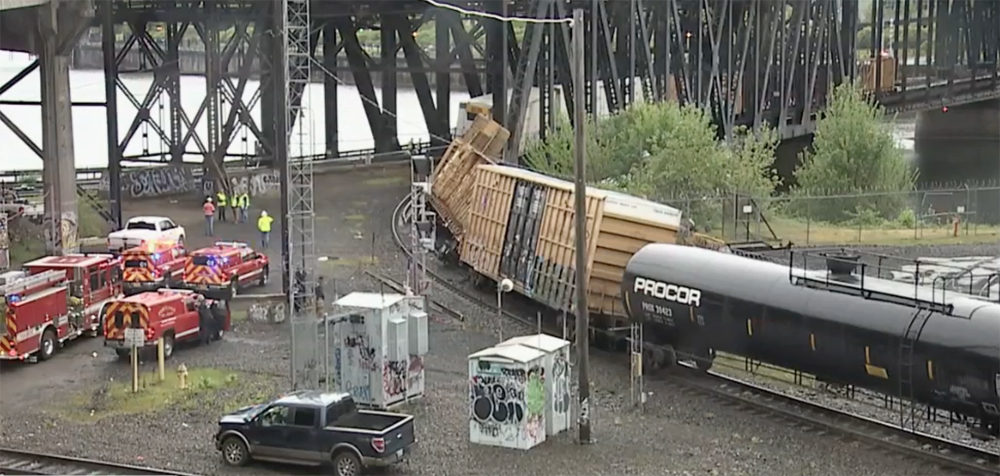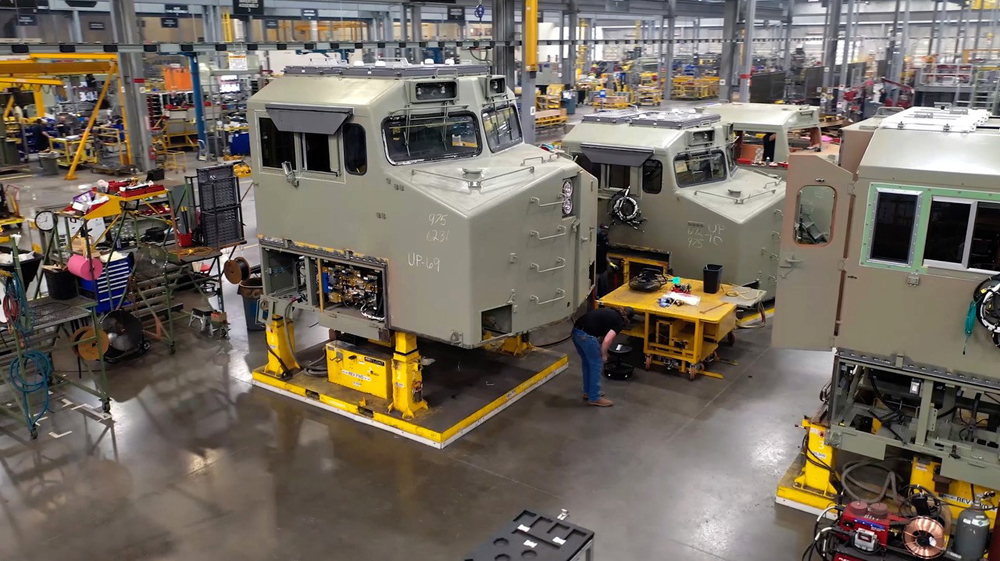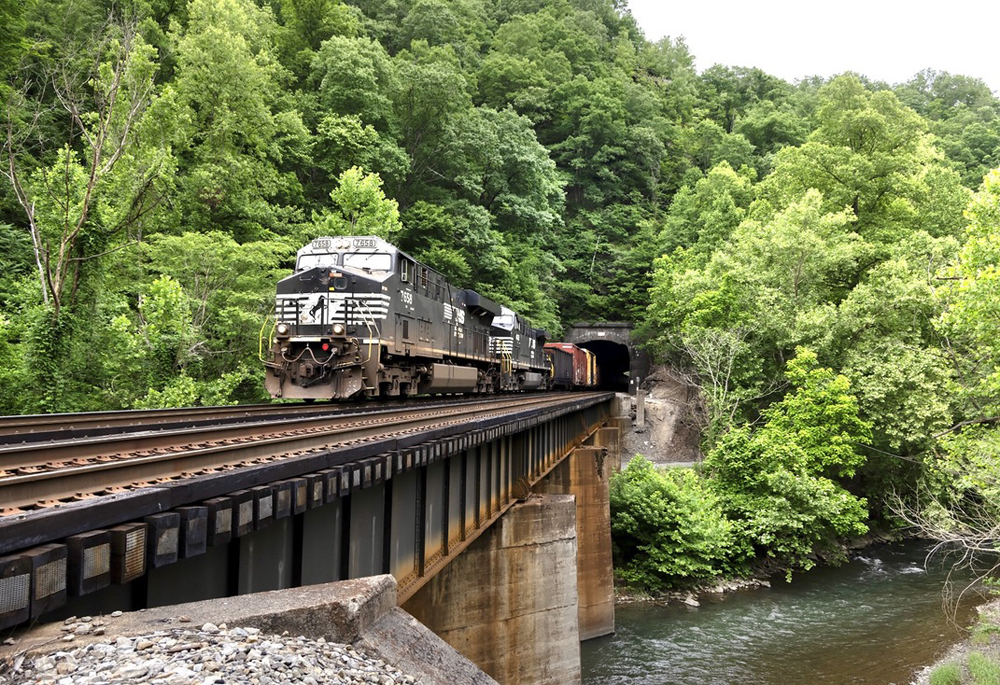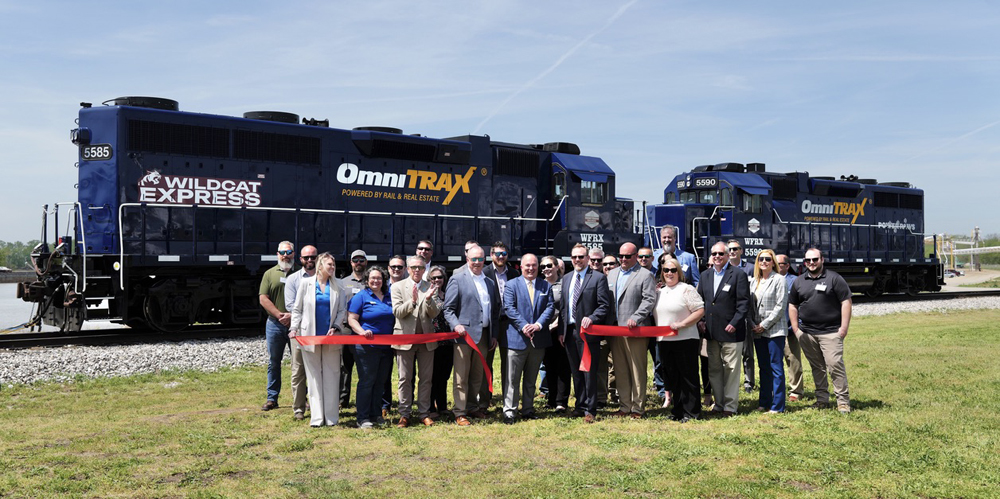
Railroad safety experts are questioning the conclusions of a study released this week that found that a 200-car train is 24% more likely to derail than a 50-car train.
The study, by researchers from Brigham Young University, Georgetown University, and Virginia Tech, analyzed Federal Railroad Administration rail equipment accident data from 2013 through 2022.
The researchers then estimated derailment risk while taking into account the reduced overall accident risk that comes from moving freight on fewer but longer trains. They concluded that, compared to a 50-car train, a 100-car train has an 11% higher risk of derailment and that the odds of a wreck rise as the number of cars in a train increases.
Gary Wolf, a prominent derailment investigator, says the study lacks credibility because it does not factor out derailments that have nothing to do with train length, such as certain types of mechanical or track problems.
Conversely, Wolf says the study doesn’t delve into derailment risk from causes that can stem from train length, including air brake issues, poor train handling, slack action, and broken knuckles.
A definitive study, he says, would involve sorting through accident reports, finding causes related to train length, and then comparing 100-car trains to 200-car trains, for example. The derailment of a long train, he says, may have nothing to do with train length.
Christopher P.L. Barkan, professor and George Krambles Director of the Rail Transportation and Engineering Center at the University of Illinois at Urbana-Champaign, who has conducted train length and safety research, has questions about the study’s methodology.
FRA derailment data measures train length by the number of cars, rather than linear length in feet, he notes. The study’s authors attempt to overcome this by assuming an average car length. But this neglects the fact that train length can vary widely when measured by number of cars. A 50-car unit train of hoppers, Barkan says, will be roughly one-fifth the length of a 50-car train of five-unit articulated well cars.
Treating these as equivalent trains in terms of train dynamics neglects some important factors that could affect derailment likelihood, Barkan says.
Barkan also had questions about the statistical simulation technique used to calculate derailment rates.
“The authors acknowledge an important limitation, namely the lack of exposure or ‘denominator’ data that are necessary to calculate rates. Specifically, they don’t know train-miles by train length, so they cannot calculate rates,” he explains. “To their credit the authors applied a novel statistical approach to try and overcome this but they have made a number of implicit assumptions that may affect their results and need to be investigated before the results can be accepted.”
The Association of American Railroads had similar concerns.
“Since train traffic data is not available publicly, the study used a questionable statistical method that might be acceptable for a route or corridor analysis where the distribution of trains with different lengths can be validated visually. Using the method for a network-wide analysis is stretching the validity of both the input data and conclusions of the study,” spokeswoman Jessica Kahanek says.
The AAR also notes that the study did not take into account different types of trains, including intermodal trains, bulk unit trains, or merchandise trains, whose lengths vary considerably based on car types. They also have different handling characteristics.
“By mixing all train types, car types and different linear lengths together, the basis for their findings is difficult to untangle,” Kahanek says. “Given these methodological challenges, the study cannot be used to support legislative or regulatory efforts to cap train length to a maximum x-foot length.”
The study’s authors, Peter Madsen of BYU, Robin Dillon of Georgetown, Konstantinos Triantis of Virginia Tech, and Joseph Bradley of BYU, said elected officials and regulators should take into account more factors than derailment risk. The use of longer trains is a complex and multifaceted issue, they noted, and the lack of available data has made it difficult for researchers to examine the relationship between freight train length and the risk of derailment.
The study’s conclusions did not surprise Greg Regan, president of the Transportation Trades Division of the AFL-CIO, who has called for train-length regulation.
“Unfortunately, rail workers are all too familiar with the dangers posed by long, heavy trains,” he says. “Currently, there is no maximum train length established by federal law. This must change. As freight rail companies increasingly operate longer trains, we are eager to see increased federal regulation of train length, weight, and composition to improve safety for all.”
The FRA’s safety experts are delving into the study and its statistically complex analysis and therefore could not provide a detailed comment on its conclusions.
“FRA is still reviewing the journal article published in Risk Analysis to fully understand the methodology used and conclusions drawn,” spokesman Warren Flatau says. “We appreciate the efforts of the researchers, and it is our hope this work will contribute to our shared understanding of very long trains.”














Shows more need for further studies for the consultants! Make work $$. Reminded of a TRAINS article yrs ago on the KCS and their mid-train helper derailment problem. W D Deramus himself was involved in the story calling in at 0215am telling the dispatchers to put the helpers no more than x no. of cars back in the train. For 3 weeks no derailments until someone forgot and sent out a train with midtrain helpers which derailed in 10 minutes!
Great Journalism as it used to be done. No Artificial intelligence no substitute for the Real Thing!
When you run unloaded center beam flat cars either at the beginning of a train or somewere in the middle with fully loaded train behind i the cars on a sharp curve, trains will derail. Ask NS and their attempt to go around Horseshoe Curve a few years ago with empty center beams right behind the engine.
The study was an exercise in correlation. Good start. Now we need a study in causation.
Right on!
More work $$$ for the consultants!
Where would the additional crews come from?
If you run for trains of 50 cars, aren’t you back to the same chance of derailment?
Where to start. A study concludes findings lacking unavailable data and an industry mocking a study without this data. Chicken and egg arguments or political pressures and manipulation? I leave this to someone else.